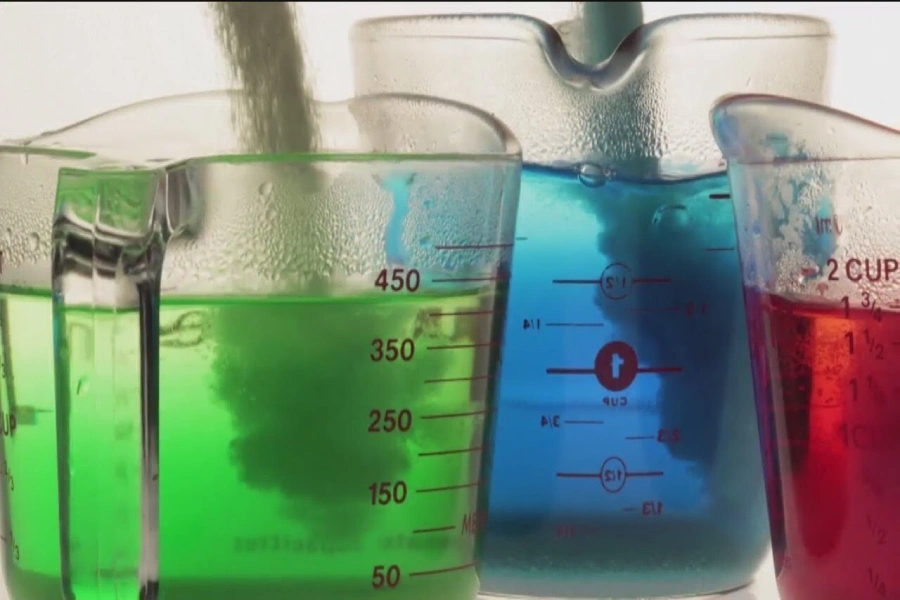On April 22, 2025, U.S. health officials unveiled a significant plan to phase out petroleum-based synthetic food dyes from the market. This initiative, backed by the U.S. Department of Health and Human Services (HHS) and the Food and Drug Administration (FDA), is part of the broader “Make America Healthy Again” campaign. While this move aims to address potential health concerns—particularly the possible link between synthetic food dyes and ADHD in children—it raises important legal, regulatory, and constitutional questions. The plan could have profound implications for U.S. food and beverage companies, consumer safety, and federal power. In this article, we’ll explore the legal challenges surrounding the FDA’s authority to enforce the phase-out, the potential for legal action from the food industry, and the broader consequences for food regulation in the U.S.
The U.S. Government’s Plan to Phase Out Synthetic Dyes
The U.S. government’s plan involves removing synthetic dyes from the food and medicine industries, citing potential health risks, particularly a possible link between synthetic food dyes and conditions like ADHD. Despite the lack of conclusive evidence on the carcinogenic effects of some of these dyes, the government has proposed a timeline for their removal.
This plan, however, is not without its legal hurdles. The federal government aims to work with food manufacturers to transition to natural alternatives, but it remains unclear whether they have the authority to enforce such a sweeping change without further legislation from Congress.

What Are Petroleum-Based Synthetic Dyes?
Petroleum-based synthetic food dyes have been used in the U.S. for decades. These dyes are affordable and abundant, making them common in products like candy, breakfast cereals, cough syrup, and vitamins. The most well-known synthetic dyes include FD&C Red No. 3 (erythrosine), FD&C Red No. 40, FD&C Yellow No. 5, and FD&C Blue No. 1.
These dyes are derived from petroleum and have long been associated with health concerns. Some studies have suggested a link between synthetic dyes and ADHD in children, while others have raised concerns about potential carcinogenicity. However, these claims remain inconclusive, and scientific opinion is divided.
Legal Considerations: The Role of the FDA
From a legal perspective, the FDA has significant authority over food and drug regulation, but the plan to phase out synthetic food dyes raises important constitutional and administrative law questions.
1. First Amendment and Free Speech Issues
The First Amendment guarantees freedom of speech, including the right to express ideas in the form of marketing and product labeling. Forcing food companies to switch to natural dyes could be viewed as an infringement on their commercial speech rights, especially if the government mandates certain labels or restricts how they advertise their products. Companies may argue that their right to choose the appearance and ingredients of their products should be protected.
2. Regulatory Overreach and Federal Power
The U.S. Constitution grants the federal government the power to regulate interstate commerce and ensure public health and safety. However, any federal regulation that imposes significant costs on businesses or restricts market choice must be scrutinized under the commerce clause and administrative law principles. While the FDA has authority to regulate food additives, forcing companies to adopt specific ingredients may be seen as an overstep without clear legislative backing from Congress.
3. The Delaney Clause and Its Implications
One key element in the government’s move to phase out certain dyes is the invocation of the Delaney Clause, a provision in the Federal Food, Drug, and Cosmetic Act that prohibits the approval of food additives known to cause cancer in animals. This clause led to the revocation of FDA approval for FD&C Red No. 3 (erythrosine). However, the FDA cannot rely on the Delaney Clause for the other dyes, as studies showing cancer risk in humans or animals are still inconclusive. This creates legal ambiguity, as the FDA cannot invoke the same regulatory powers for other dyes without a conclusive scientific basis.
4. Potential for Lawsuits
The food industry could challenge the government’s new plan in court, arguing that the FDA does not have the authority to mandate such changes without specific legislative backing from Congress. The legal battle could center around whether the FDA’s regulatory action constitutes an unlawful form of administrative overreach. If the courts rule in favor of the food industry, it may set a precedent that limits the federal government’s ability to impose regulations on food products without explicit Congressional approval.
The Role of the Food Industry
The food industry’s response to the proposed phase-out will be crucial. Many food manufacturers have already started switching to natural alternatives, but others may resist the change due to the higher costs associated with organic dyes. The government’s reliance on voluntary compliance rather than Congressional legislation may lead to inconsistencies in how the plan is implemented.
In the short term, the food industry faces a difficult decision: whether to absorb the cost of switching to natural dyes or challenge the plan in court. If the FDA’s proposal moves forward without Congressional backing, it could set a dangerous precedent for government interference in food production, potentially affecting other industries in the future.
Broader Implications for U.S. Food Regulation
The current push to phase out synthetic food dyes is just one example of the broader trend toward stricter food regulation in the U.S. However, this policy also raises questions about the balance between government intervention and market freedoms. The legal and regulatory environment surrounding food additives is constantly evolving, and this situation highlights the tension between consumer protection, corporate rights, and public health.
The case could have implications for how other substances used in food production, such as artificial preservatives and sweeteners, are regulated in the future. As the debate over food safety and consumer protection continues, legal experts will be closely monitoring how the courts interpret the FDA’s role in shaping the nation’s food supply.
Conclusion
The U.S. government’s decision to phase out synthetic petroleum-based food dyes represents a bold step toward improving public health, but it also introduces significant legal and regulatory challenges. As the FDA navigates these hurdles, the food industry, legal experts, and policymakers will need to balance public health concerns with the rights of businesses and the need for clear legal frameworks.
While the transition to natural food dyes may lead to healthier options for consumers, it is essential to ensure that such regulatory changes are based on sound legal principles and respect the rights of both consumers and businesses.
FAQ
-
What is the purpose of phasing out synthetic food dyes?
-
The government aims to improve public health by removing synthetic dyes, which may be linked to ADHD in children, and replacing them with natural alternatives.
-
-
Can the FDA legally enforce the ban on synthetic dyes?
-
The FDA has regulatory authority over food additives, but the legal basis for forcing companies to switch to natural dyes without Congressional approval is unclear and could lead to legal challenges.
-
-
How will this affect the food industry?
-
Food manufacturers may face higher costs associated with switching to natural dyes. Some companies may resist the change, leading to potential legal disputes over the government’s authority to impose such changes.
-
-
What is the Delaney Clause?
-
The Delaney Clause prohibits the FDA from approving food additives that have been shown to cause cancer in animals. This clause has been invoked in the case of FD&C Red No. 3, leading to its removal from the market.
-
-
Are other countries already banning synthetic food dyes?
-
Yes, many European countries have already banned or restricted the use of certain synthetic dyes in food products.
-

